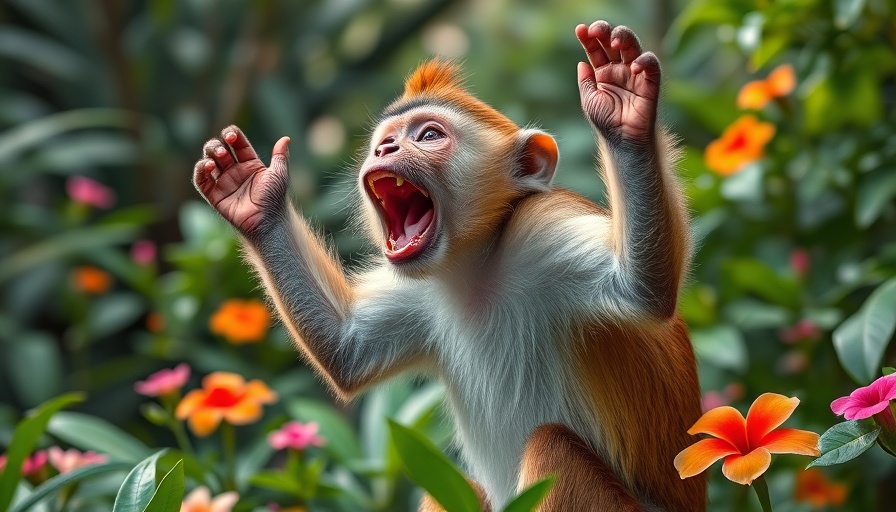
The Unexpected Yodelling Champs of the Rainforest
A fascinating new study brings to light that the most skilled yodellers aren't Austrian alpine performers, but rather monkeys nestled deep within the lush canopies of Latin America's rainforests. Researchers from Anglia Ruskin University and the University of Vienna published groundbreaking findings on how various monkey species execute vocalizations that rival the famed Alpine yodel, illustrating the impressive complexity found in non-human vocal communications.
Understanding Monkey Vocalization: A Unique Advantage
At the heart of this research is the study of anatomical structures known as vocal membranes. These membranes are distinct from the vocal folds that humans possess and have given New World monkeys a unique advantage in producing various sounds. While humans have evolved to ensure more stable speech, these membranes allow primates to produce a variety of calls, including surprising "voice breaks" that lead to an unmatched frequency transition in their vocalizations.
Vocal Membranes and Their Impact on Communication
According to the researchers, these thin membranes enable monkeys to switch sound production methods, radiating excitement through calls that span an astonishing number of musical octaves. The ultra-yodels produced by New World monkeys can show frequency leaps up to five times that of human capabilities. The fact that these monkeys can exceed three musical octaves invites curiosity about the implications of their vocal flexibility in social settings.
Echoes of Evolution: How Vocalization Adaptations Developed
Exploring further into the evolutionary aspect of these vocal membranes provides an intriguing insight. As common ancestors diverged, evolution opted for speech stability in humans. In contrast, it seems that especially in New World monkeys, these structures have become crucial in social communication, possibly enhancing their social interactions and mating calls. Understanding these shifts can elaborate on how vocalizations are pivotal in social hierarchical structures among primate species.
Field Studies and Findings: Peering into the Lives of Primate Vocal Artists
The team's groundbreaking study utilized CT scans, fieldwork, and computer simulations at Bolivia's La Senda Verde Wildlife Sanctuary. The sanctuary offered a natural listening post for observing how various species, including the black and gold howler monkey and tufted capuchin, express themselves vocally. These practical applications of technology in studying animal behavior highlight a future direction of curiosity in wildlife research.
Broader Implications for Understanding Animal Communication
This research is setting the stage for more profound inquiries into how different species might share emotional connections through their vocalizations. It poses the question—how can we apply what we learn from monkey vocalizations to further comprehend animal communication and intelligence? This could have ripple effects on how humans perceive animal societies, inclusion of emotional intelligence in interactions, and even conservation strategies that focus on maintaining social structures of these species.
Ultimately, understanding these dynamic vocal patterns not only widens our scope of the natural world's communication methods but also invites a scholarly and cultural exploration of how we, as humans, fit into this grand narrative of vocal artistry in nature.
While the research reveals incredible insights into New World monkeys' unique yodelling abilities, it provokes thoughts on the broader implications for wildlife conservation and human-animal relationships, highlighting the profound interconnectedness of life. Are you inspired by the coordination found in nature? Dive deeper into wildlife studies and appreciate the artistry within the animal kingdom!
 Add Element
Add Element  Add Row
Add Row 



Write A Comment